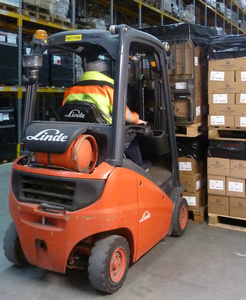
 |
Mark Sennett
Managing Editor |
 |
Kelly Rose
Editor |
| Home> | Handling & Storing | >Containers | >Why do double stacked pallets tend to lean and often topple? |
| Home> | Handling & Storing | >Packaging | >Why do double stacked pallets tend to lean and often topple? |
| Home> | Handling & Storing | >Warehouse Safety | >Why do double stacked pallets tend to lean and often topple? |
Why do double stacked pallets tend to lean and often topple?
16 December 2014
Double stacking of pallets doubles the effective storage area and transport loading density so there is a massive incentive. However, incorrect double stacking greatly increases risk.

AEC Designs provides a guide to successful double stacking.
Successful double stacking relies on the base pallet load being sufficiently strong to carry the load of the pallet above. In palletised carton loads all the strength is provided by the walls of the cartons, which are only strong in compression. Any sideways forces will cause the cardboard to deform and ultimately collapse. Once one carton wall starts to collapse the other cartons are sharing a greater portion of the load, so adjacent cartons are also likely to collapse. Added to this the upper pallet load will start to lean applying further load to the already weakened side of the carton stack.
- Correctly applied stretch or shrink wrap helps to stabilize the carton side walls as well as holding the cartons into a close stack.
- It is important that only the correct pallets are used as not all pallets are suitable for double stacking.
- Ensure Forklift trucks have a ForkAngles mast tilt indicator so that the pallets can be accurately stacked.
- Double stacked pallets should generally not be moved as a stack. The extra forces applied whilst tilting and moving the stack can cause its collapse.
- Be very careful when forming a row of double stacked pallets. If these are pushed close together there is a build up of forces down the row which can cause the whole row to collapse. There are strict rules relating to the correct stacking and restraining of pallets for transportation due to the additional dynamic forces experienced during shipping.
























